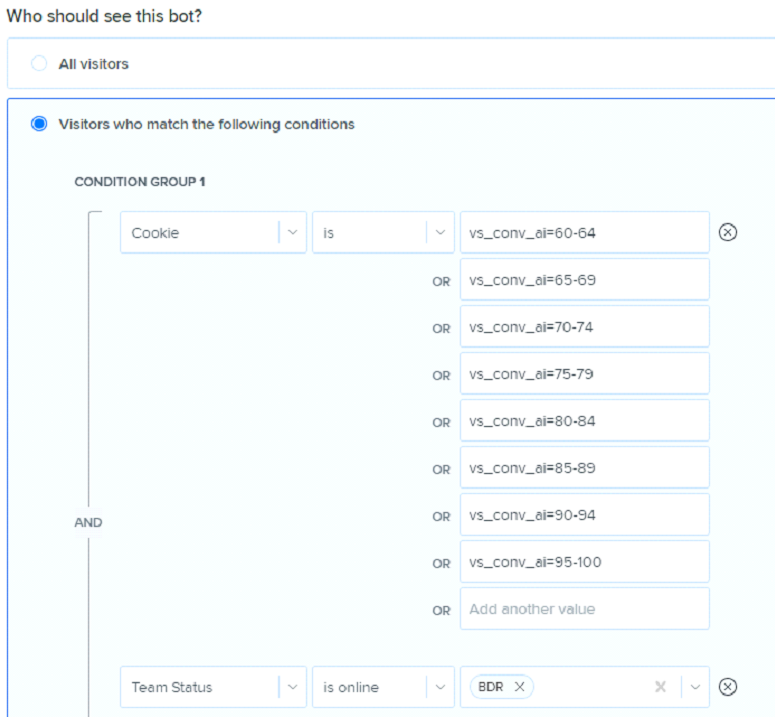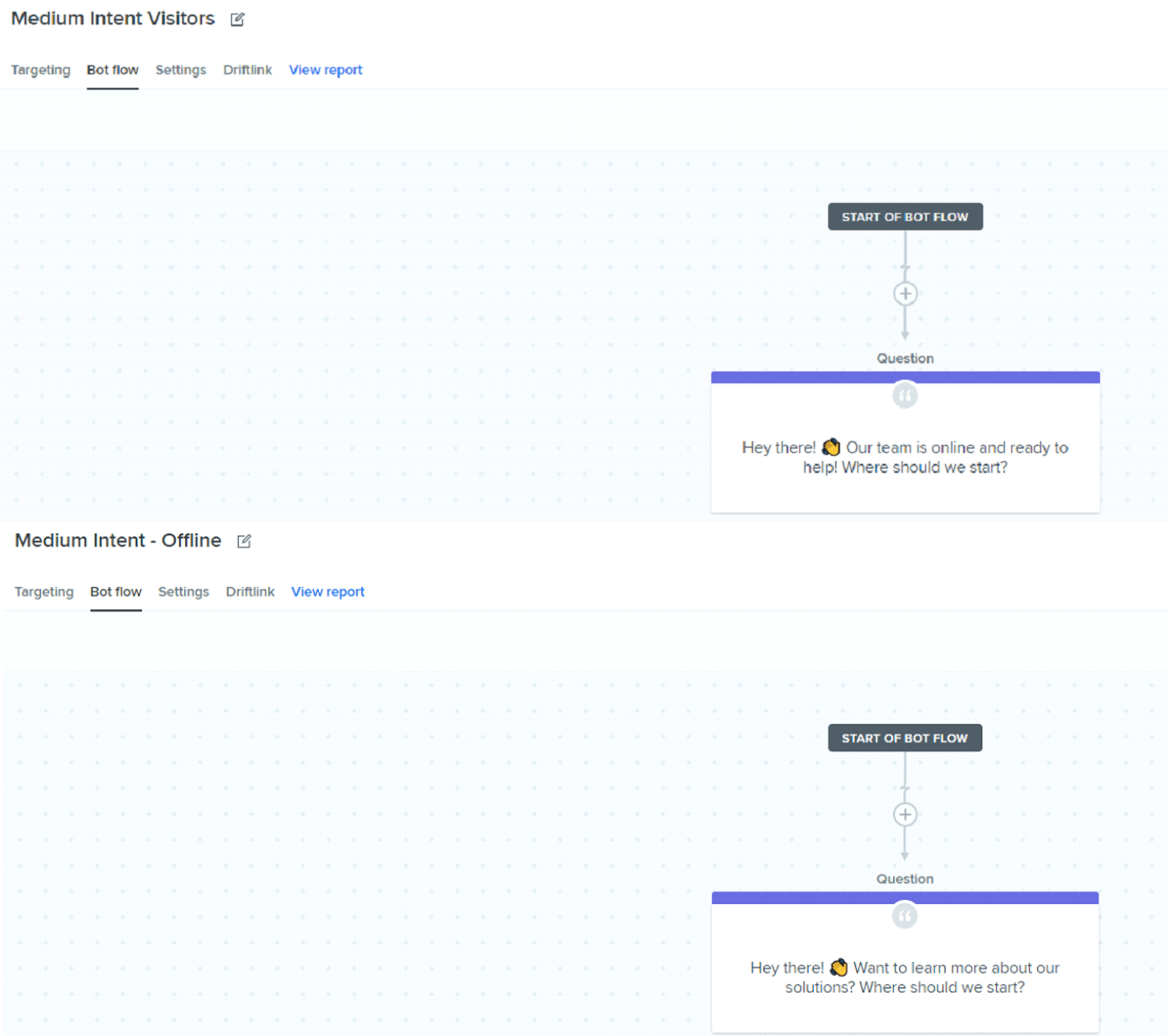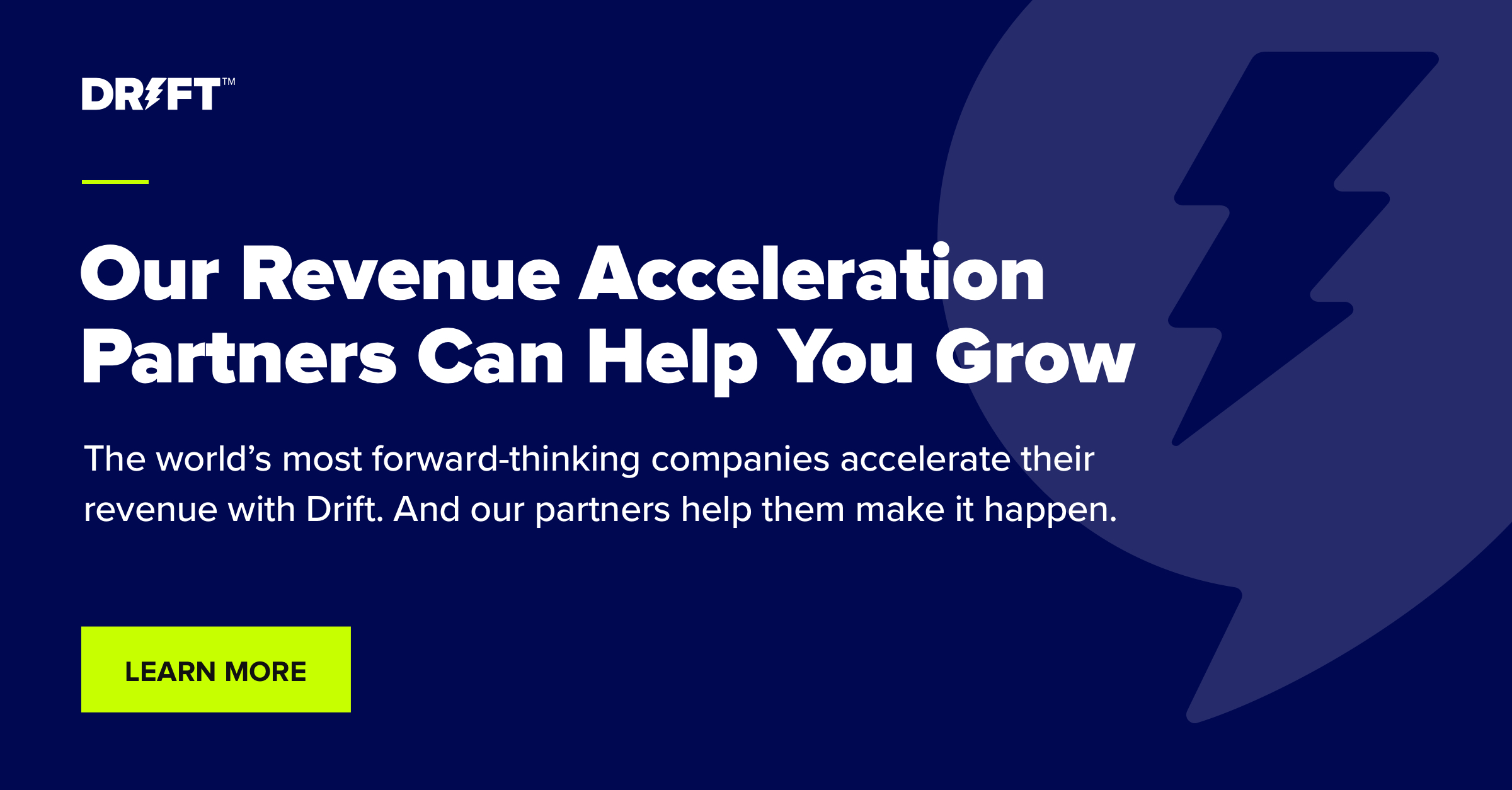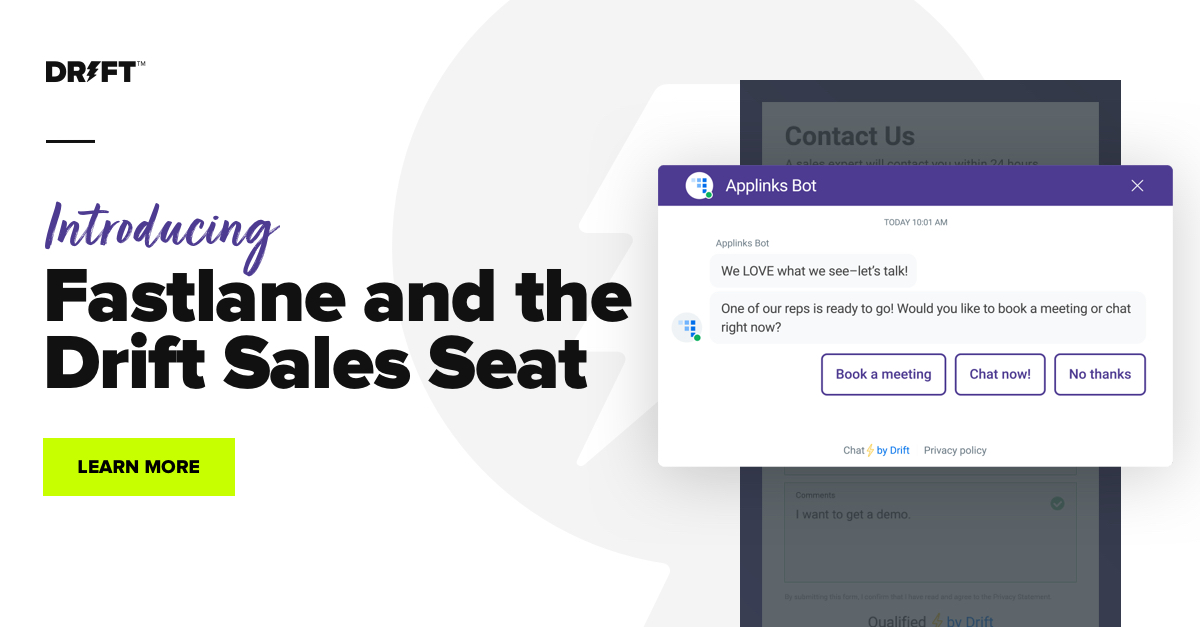Conversational Marketing gets its power from tailoring buying experiences to individuals in real-time. But to delight your website visitors with a personalized approach, you need to understand exactly why your visitors have come to your site in the first place – in other words, their intent.
When you have a sense of what your visitors are looking for, you can hit them up in the moment with messaging designed to answer their questions (using a Drift Custom Chatbot, for example).
Or, if you know your visitors are close to making a purchase, you can connect them directly with live representatives.
But here’s where intent gets tricky: If you get it wrong (say, by sending someone to sales who is nowhere near ready to buy), you might end up annoying your potential customers and wasting your best reps’ time.
Drift Solutions Partner Lift AI put buyer intent front and center when they built their Buyer Intent Solution that uses machine learning to score the conversion intent of every website visitor, even if they’re anonymous.
So, I thought Lift AI Vice President of Client Success Tyler Laird would make an excellent interview subject for my continuing series of tips and insights from some of Drift’s most successful partners.
Specifically, I was hoping Tyler could demonstrate how an intent-oriented Conversational Marketing strategy can reach and convert more of your website visitors than a simple page-based approach.
Tyler did not disappoint.
Editor’s note: The following has been edited and condensed for clarity.
Nick Salvatoriello: How does Lift AI derive buyer intent data, and how do you use it to help your clients?
Tyler Laird: Lift AI uses a proprietary machine-learning model which was trained using first-party data captured over 15 years. That data includes over one billion profiled web visitors and over 14 million live sales interactions, which is then combined with real-time behavioral analytics on a customer’s website to predict an anonymous visitor’s buyer intent (with over 85% accuracy). Lift AI also complements the firmographic and business profile information from solutions such as 6sense and Clearbit using this model.
We use this data to develop playbooks, chat engagement strategies, and custom service offerings that match the visitors’ buyer intent, therefore increasing conversion rates across the board. The most powerful element of Lift AI is the fact that it all happens in real-time – so that companies using Drift can capitalize on the buyer intent data before their visitors slip away or move on.
Nick: Why is buyer intent information so critical to creating effective Conversational Marketing strategies?
Tyler: High-quality buyer intent data is the ultimate fish finder. Drift is the best fishing line – ready to catch the biggest fish before they swim away.
Nick: I do love a good analogy, but can you put that in more concrete terms?
Tyler: With the buyer intent data Lift AI provides, Drift users can see and engage with their most promising visitors immediately before they leave the site, while lower-intent visitors can be nurtured through Drift’s chatbots.
This results in:
- More chat coverage across the site
- More productive business development representatives (BDRs)
- More Drift conversions
Nick: I understand you have an example to share to show this in action.
Tyler: I do! This comes from our work with Formstack, a workplace productivity platform that brought us in to help accelerate their revenue.
By the time we came on the scene, Formstack had implemented Drift to cover just 6% of their website visitors, using basic playbooks to capture the low-hanging fruit of the pricing page and form page visitors. Our mission was to extract maximum value from their Drift implementation. But, Formstack didn’t want to overwhelm their sales team with non-sales traffic.
Nick: Sure, that’s a common concern. How did your Lift AI team approach the problem?
Tyler: First, we ran a trial of our AI solution to uncover the true potential of Formstack’s website using buyer intent data.
Here’s what we found:
- High-intent visitors made up 7.1% of Formstack’s overall website traffic, but they only engaged with 37.3% of that traffic using their page-based strategy.
- Mid-intent visitors made up 19.6% of their website traffic, but they only engaged with 31.1% of that traffic.
This meant that 26.7% of their site was ripe for a sales conversation, but many of those visitors were missed because Formstack could not get Drift in front of them using a page-based approach.
Nick: So, I’m guessing you steered away from that page-based approach.
Tyler: Exactly. In April 2021, we helped Formstack launch their optimized Drift implementation, starting with a targeting strategy for high-intent visitors across the entire website. This immediately increased Drift coverage from 6% in the previous quarter to 28% and increased opportunities created by 58%.
Here’s a screenshot that shows how easy it is to use Lift AI tags within the Drift Platform to target specific ranges of buyer intent with a custom-designed playbook experience. This example shows a target condition for visitors between the 60-100 range (which is a high intent grouping):

In May, we launched an additional playbook for medium-intent visitors and two more to account for high- and medium-intent visitors when the sales team is offline.
When we focus on online vs offline splits, we are able to customize hooks based on buyer intent (mid intent in the below examples) and team status (online vs. offline) to really push the engagement metrics.

These playbook changes improved Drift coverage to 47% and new opportunities by a further 30%.
Next, we focused on engaging the right visitors in each buyer intent cohort, including a way to deflect support requests by building self-help playbooks for that cohort. The result was a smoother, faster visitor experience while ensuring that BDRs spend time with the right visitors.
Finally, in June, we launched low-buyer intent playbooks for both online and offline flows, adding 7% more pipeline and increasing coverage to 93% across the website.
Nick: You’ve already touched on some of the very impressive results of your buyer intent-based strategy. Can you recap some of the key highlights?
Tyler: In the first quarter after launching, Formstack saw:
- Increase in site coverage from 6% to 93%
- Increase in conversations by 207%
- Increase in opportunities by 68%
- Increase in pipeline created by 88%
Nick: You can’t complain about those numbers.
Tyler: Nope. Formstack ended up adding seats and resources to the BDR teams to cover the high-ROI traffic that Lift AI and Drift were able to target and engage.
Here’s a soundbite from Bill MacKay, Manager of Digital Performance Marketing at Formstack:
“Leads captured through our Lift AI-powered Drift playbooks consistently drive better pipeline and revenue per lead vs. all of our other lead capture tactics.”
These results not only convinced Formstack of the value of Drift but completely exceeded what they thought was possible when you combine Conversational Marketing with high-quality buyer intent data. This project also helped our team at Lift AI see just how viable this coupling is — the fish finder and the fishing rod for website visitors.
Nick: There’s that great fishing analogy again. I hope you don’t mind if I steal that.
Tyler: Not at all!









